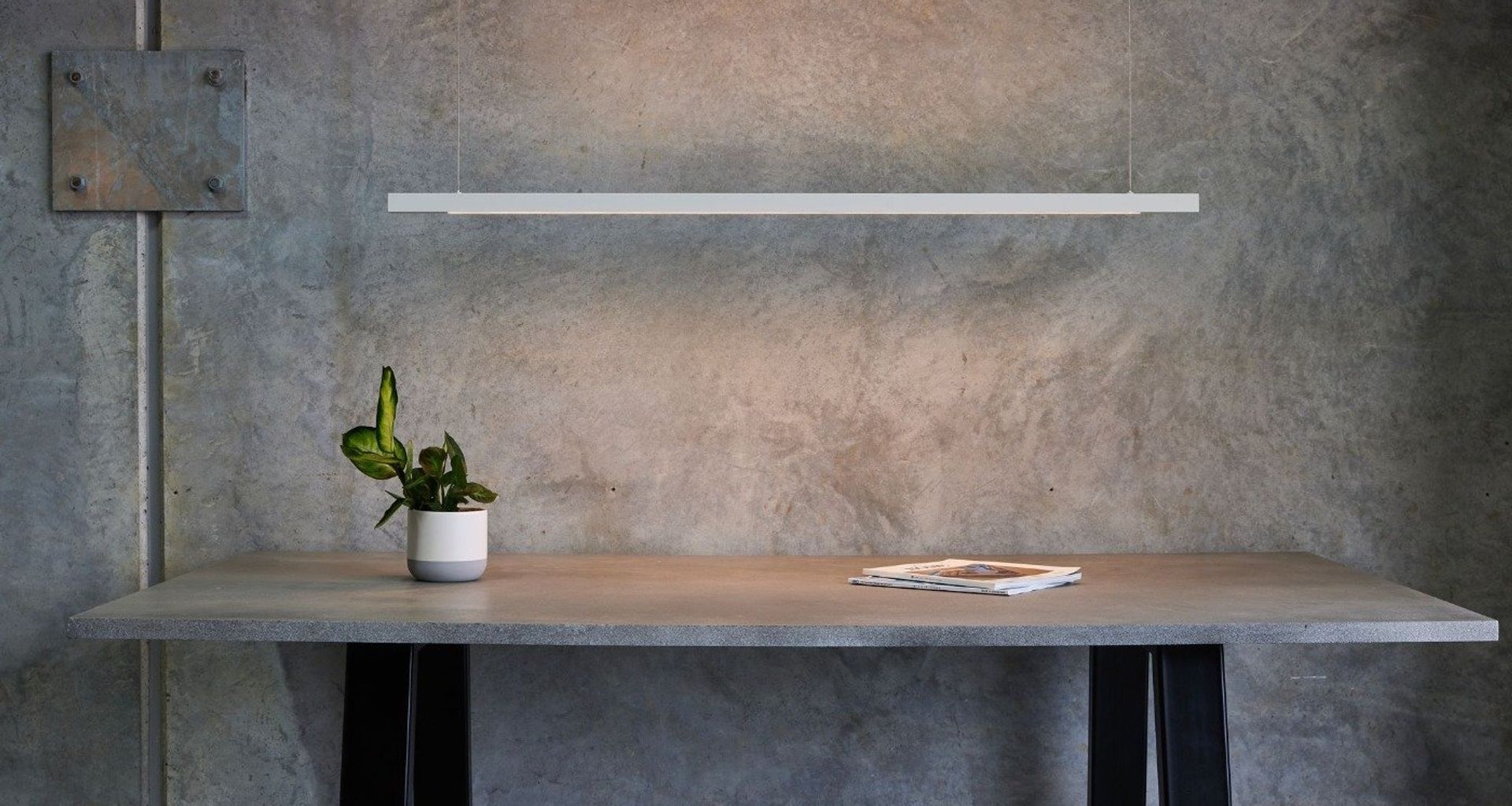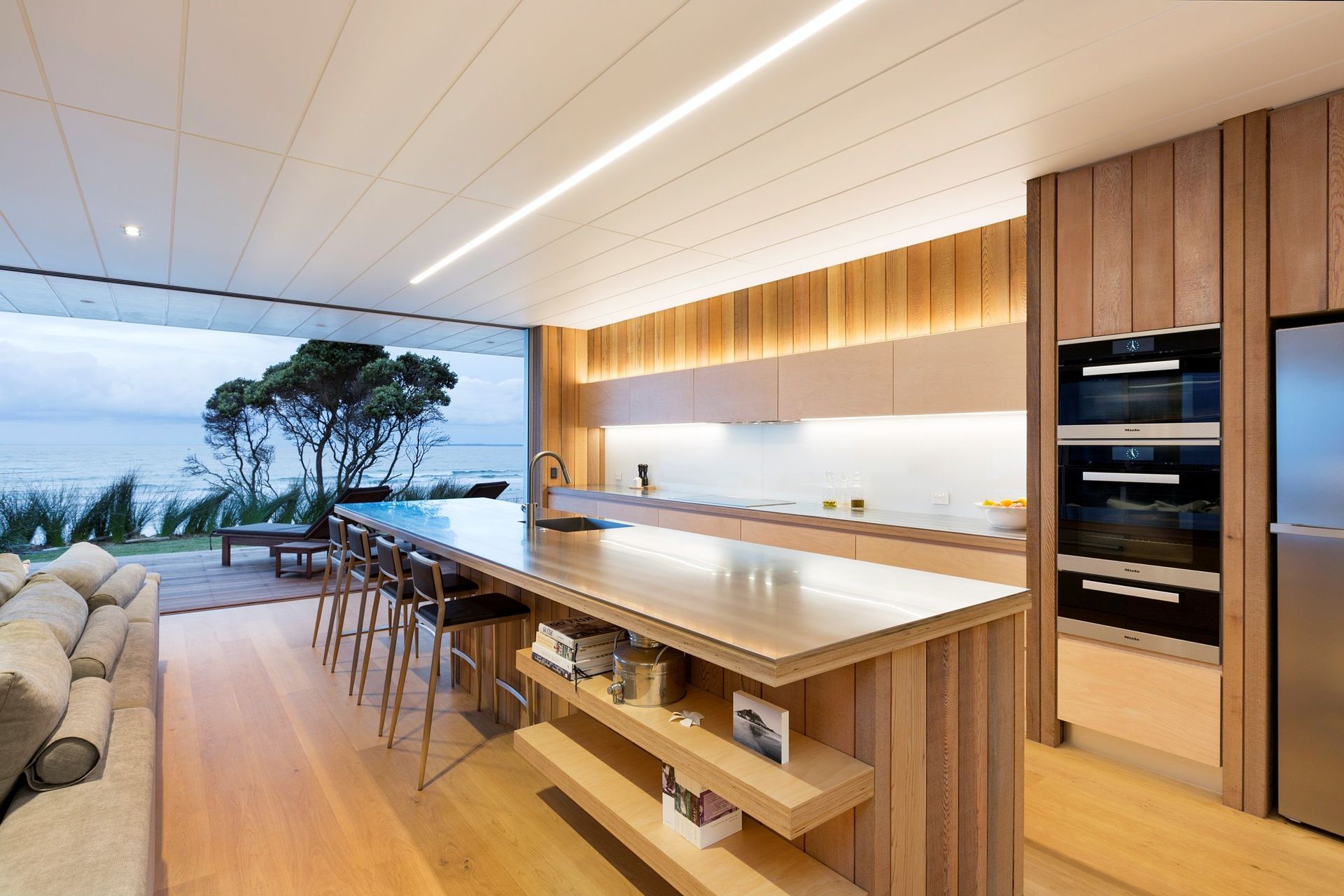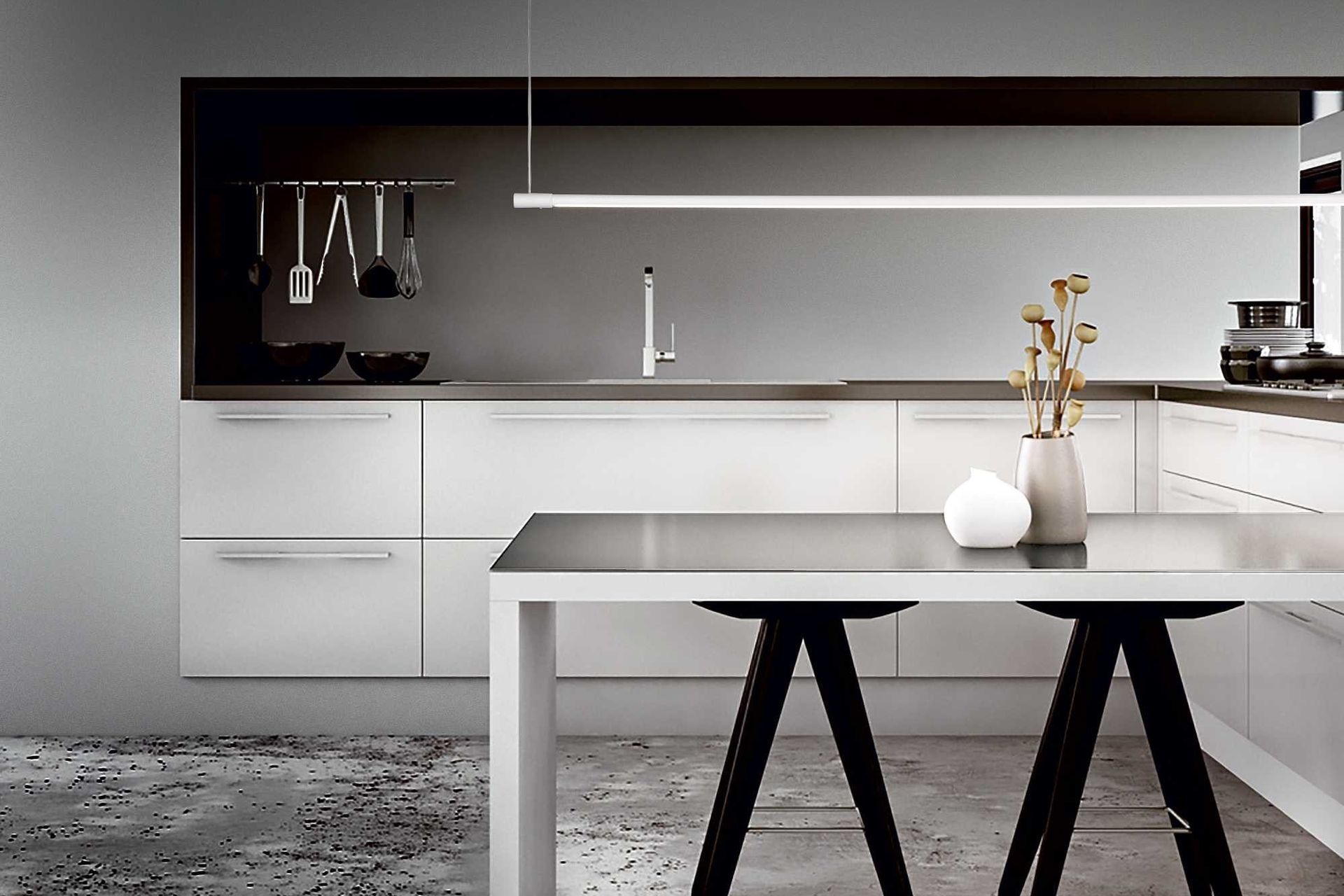What is LED linear lighting? Benefits, FAQs and more
Written by
05 July 2021
•
7 min read

If you're one of the many homeowners who are looking to upgrade your lights to something more modern, led linear lighting might be the solution for you. Widely used in the commercial sector for years, they are now increasingly becoming a fixture in residential interiors across the country. With more product choices than there have ever been, now is the perfect time to make a change.
What is LED linear lighting?
LED linear lighting is a type of ceiling lighting uses lots of light-emitting diodes (LED) together in a long, narrow housing, resulting in a sleek line of light. The use of LEDs gives them a long lifespan and also makes them extremely energy efficient.
It’s a simple and practical option for lighting living spaces and surfaces, especially those with long and narrow dimensions. It is also versatile, used for task, accent and ambient lighting — frequently featured over dining tables and kitchen islands where style and functionality are of paramount importance.
What are the different types of LED linear lighting?
There are three main types of LED linear lighting to consider for your home, each with their own traits and characteristics.
1. Suspended linear lighting
Suspended linear lighting is one of the most popular lighting trends in New Zealand and is probably the most popular of the the three. As described, it consists of a linear lighting fixture that is suspended from the ceiling by cables, chains or rods.
One of the advantages of suspended linear lighting is that they are usually adjustable in height, meaning you can tailor it to suit the needs of your space or the look you want to achieve. The raising or lowering the fixtures’ height also changes the intensity of the light which can dramatically impact a room’s ambience.
Some linear lighting fixtures also allow you to pick between direct and indirect focus (essentially downwards and upwards lighting) which allows you to have a task lighting source or an ambient lighting source.
2. Surface mounted linear lighting
Surface mounted linear lighting is where the fixtures are mounted directly to the ceiling. They are a great option for rooms with low ceilings where suspended lighting isn't practical, providing the same even distribution of light.
Again, the applications are broad with their sleek designs that serve task, accent and ambient lighting requirements. They typically don't draw the eye as much as suspended lighting fixtures which is what makes them appealing to those with contemporary, minimalist interior design.
You'll also find a variety of designs and styles to choose from which also makes them applicable for retail spaces as well as residential spaces.
3. Recessed linear lighting
Recessed linear lighting is installed into the recesses or grooves in the ceiling resulting in a flush finish that blends into the surface. They take up virtually no visual space and can make a room feel larger than it is, making them ideal for smaller spaces.
Recessed lighting is popular for commercial interior design because of its sleek and streamlined appearance. It's also great at highlighting architectural features and prized items of decor as they allow them to shine without any distractions.
They are also highly customisable and can be configured and installed at different lengths and shapes, making them a go-to choice for lighting designers everywhere.
Related article: 13 types of light fixtures and how to use them
What are the pros and cons of linear lights?
There are some compelling advantages to LED linear lighting but also some situations where they may not be the best option for a space. It's good to have an understanding of all of these so you can make an informed final decision.
The benefits of LED linear lighting
Incredible versatility
As already established, LED linear lights, no matter which type, are highly versatile lighting options to consider for the home. They can help with tasks like cooking and preparing food. They can help create a specific mood or ambience in a dining space. And they have the potential to be highly decorative fixtures in their own right as well.
Project personalisation
LED linear lighting offers a wide variety of opportunities in terms of lighting design. Lighting professionals adore them for this reason as they can manipulate colour temperatures, intensities and focus with direct and indirect linear light fixtures. This allows you to personify your space in a way that suits your specific tastes and requirements.
Energy efficiency
One of the major benefits of LED linear lighting is the high level of energy efficiency. You’ll get the same amount of light output you’d get from alternatives like fluorescent tubes, however, you’ll use far less energy and spend less. LED lighting also boasts great longevity giving you an excellent return on your investment from the initial purchase.
Even light distribution
LED linear lights are the perfect solution for lighting long spaces giving an even distribution of light across a rectangular space which is a surprisingly common need in the home. Without linear lighting, the options usually involve using multiple pendant lights or spotlights which have a more layered lighting look.
Related article: A Bright Idea: 8 Advantages of Using Linear Lights
The drawbacks of LED linear lighting
As with any lighting fixture, they have some traits that may not make them the best solution for your situation or setup.
Upfront cost
Linear LED lighting can be a bit more expensive with the initial purchase price compared to some other types of lighting fixtures which can be a deterrent. However, the use of LED lights makes them incredibly energy and cost-efficient in the long run.
Installation complexity
As they are often used in bespoke, designer situations, installations can be complex requiring the expertise of an experienced lighting installer. This inevitably comes at a cost but gives you peace of mind of a job well done.
Lighting aesthetic
While LED lighting is almost universally considered the way of the future, some purists still prefer the lighting aesthetic offered by fluorescent tubes and incandescent lights. This is a subjective factor that won't be relevant to all.
Frequently asked questions
Having covered the definition, types, benefits and drawbacks of linear LED lighting there are naturally a few questions that many still have. Below are the most common queries that arise to fill in all the gaps.
What is the lifespan of LED lights?
LED lights have a great lifespan, often ranging from 30,000 to 50,000 hours or more. This means they seldom need to be changed meaning they are a low-maintenance solution that can be relied on for years to come.
Can LED linear lights be dimmed?
Many LED linear lights are designed to be dimmable, giving you even greater flexibility with the light intensity and mood you want to establish in a space. You'll just need to check that the product itself is compatible with a dimmer switch and vice versa.
Do LED linear lights generate a lot of heat?
LED linear lights generate significantly less heat compared to traditional lighting sources. This means they won't make small spaces stuffy and also means they are safer to use especially when it comes to recessed linear lighting.
What are the main differences between linear LED lighting and linear fluorescent tubes?
The main difference between linear LED lighting and fluorescent lighting is in the technology where you have light-emitting diodes vs low-pressure mercury vapour and phosphor coating inside a tube. As a consequence of this, linear LED lighting is generally more cost-effective, energy-efficient and more environmentally friendly than their fluorescent counterparts.
Everything you need to know about LED linear lighting
After this extensive examination of LED linear lighting, you're hopefully in a much better position to decide whether it's the right fit for you. There are some amazing options to consider with more and more coming onto the market in New Zealand every day so now's the perfect time to make a change.
(This article was updated on 11th December 2023)




